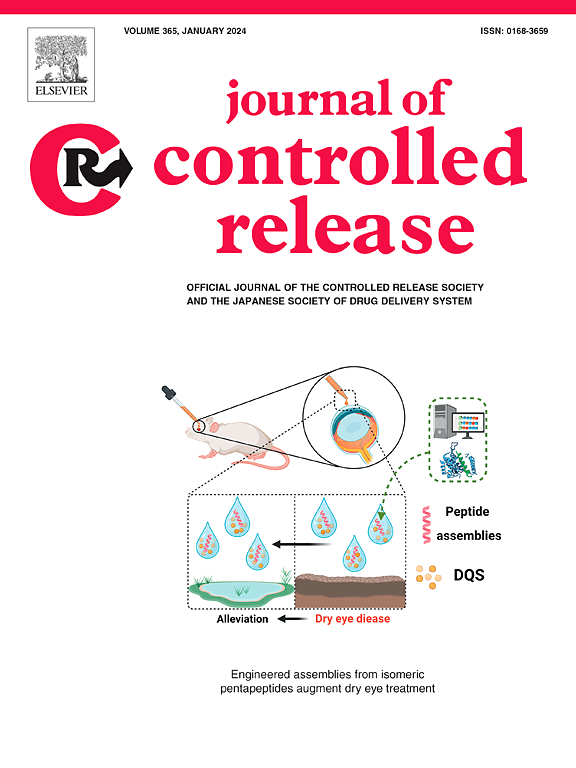Nanoparticles encapsulating antigenic peptides induce tolerogenic dendritic cells in situ for treating systemic lupus erythematosus
IF 10.5
1区 医学
Q1 CHEMISTRY, MULTIDISCIPLINARY
引用次数: 0
Abstract
Using Tetrahedral framework nucleic acids, we combined antigenic peptides to create the “DART” vaccine: DNA framework-Antigenic peptide-RNA modification-Targeting aptamer coupling. Generating antigen-specific tolerogenic dendritic cells (tolDCs), for systemic lupus erythematosus (SLE) is a potential therapeutic strategy for addressing compromised autoimmune tolerance. However, simple antigenic peptides degrade easily, lack specificity for delivery to dendritic cells (DCs), and cannot transform DCs to tolDCs. Therefore, this study aims to employ DART to generate tolDCs and compare DART-treated DCs to tolDCs. DART improved peptide stability, specifically targeted DCs, induced tolDCs in situ, and showed promising outcomes in mitigating SLE symptoms in the MRL/lpr mouse model. DART effectively normalized the plasma cytokine levels, glomerulonephritis, and joint lesions in MRL/lpr mice. These findings highlight the potential of the DART vaccine to induce transformation of DCs to tolDCs and address SLE symptoms, suggesting novel therapeutic utility. These findings may advance vaccine design for various autoimmune diseases.

求助全文
约1分钟内获得全文
求助全文
来源期刊

Journal of Controlled Release
医学-化学综合
CiteScore
18.50
自引率
5.60%
发文量
700
审稿时长
39 days
期刊介绍:
The Journal of Controlled Release (JCR) proudly serves as the Official Journal of the Controlled Release Society and the Japan Society of Drug Delivery System.
Dedicated to the broad field of delivery science and technology, JCR publishes high-quality research articles covering drug delivery systems and all facets of formulations. This includes the physicochemical and biological properties of drugs, design and characterization of dosage forms, release mechanisms, in vivo testing, and formulation research and development across pharmaceutical, diagnostic, agricultural, environmental, cosmetic, and food industries.
Priority is given to manuscripts that contribute to the fundamental understanding of principles or demonstrate the advantages of novel technologies in terms of safety and efficacy over current clinical standards. JCR strives to be a leading platform for advancements in delivery science and technology.
 求助内容:
求助内容: 应助结果提醒方式:
应助结果提醒方式:


